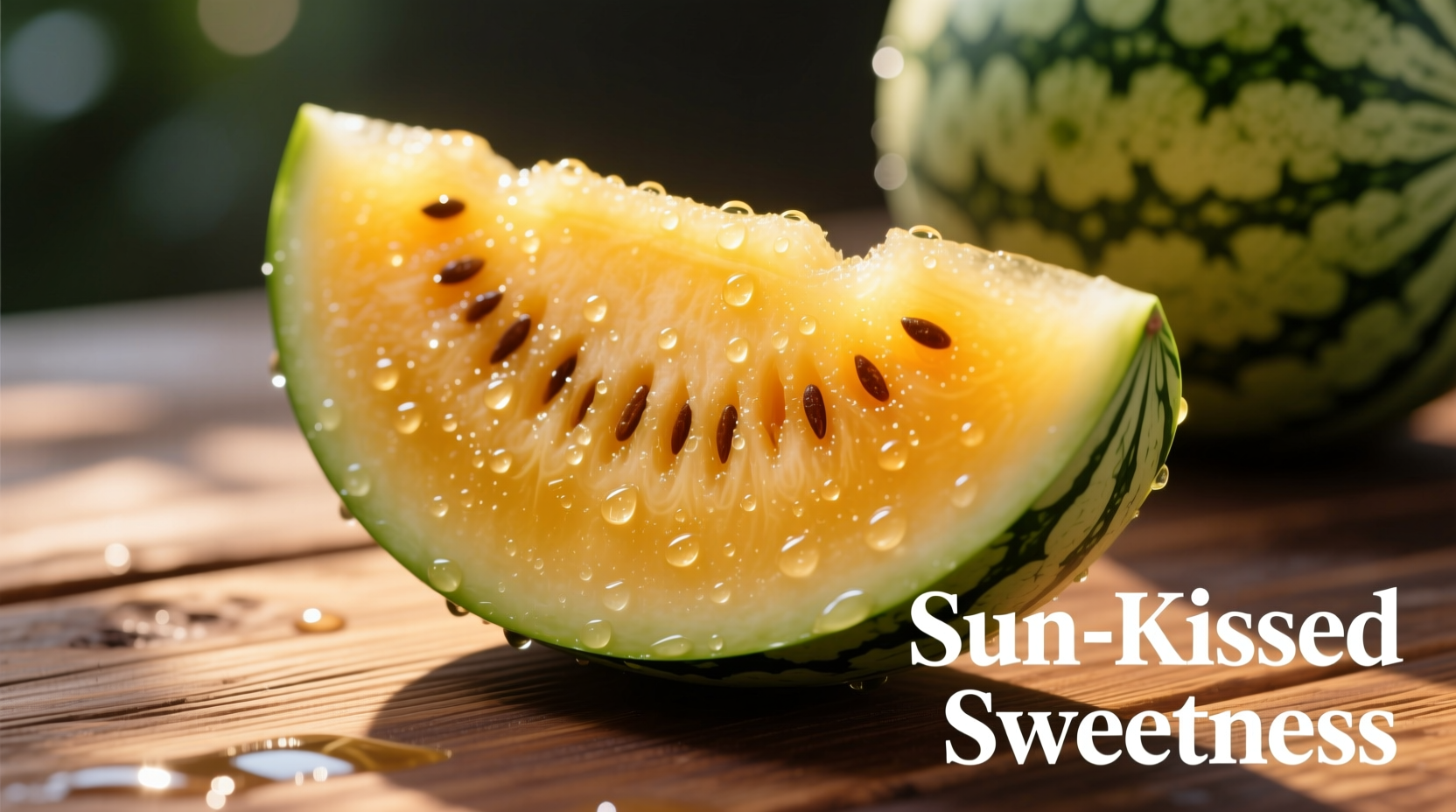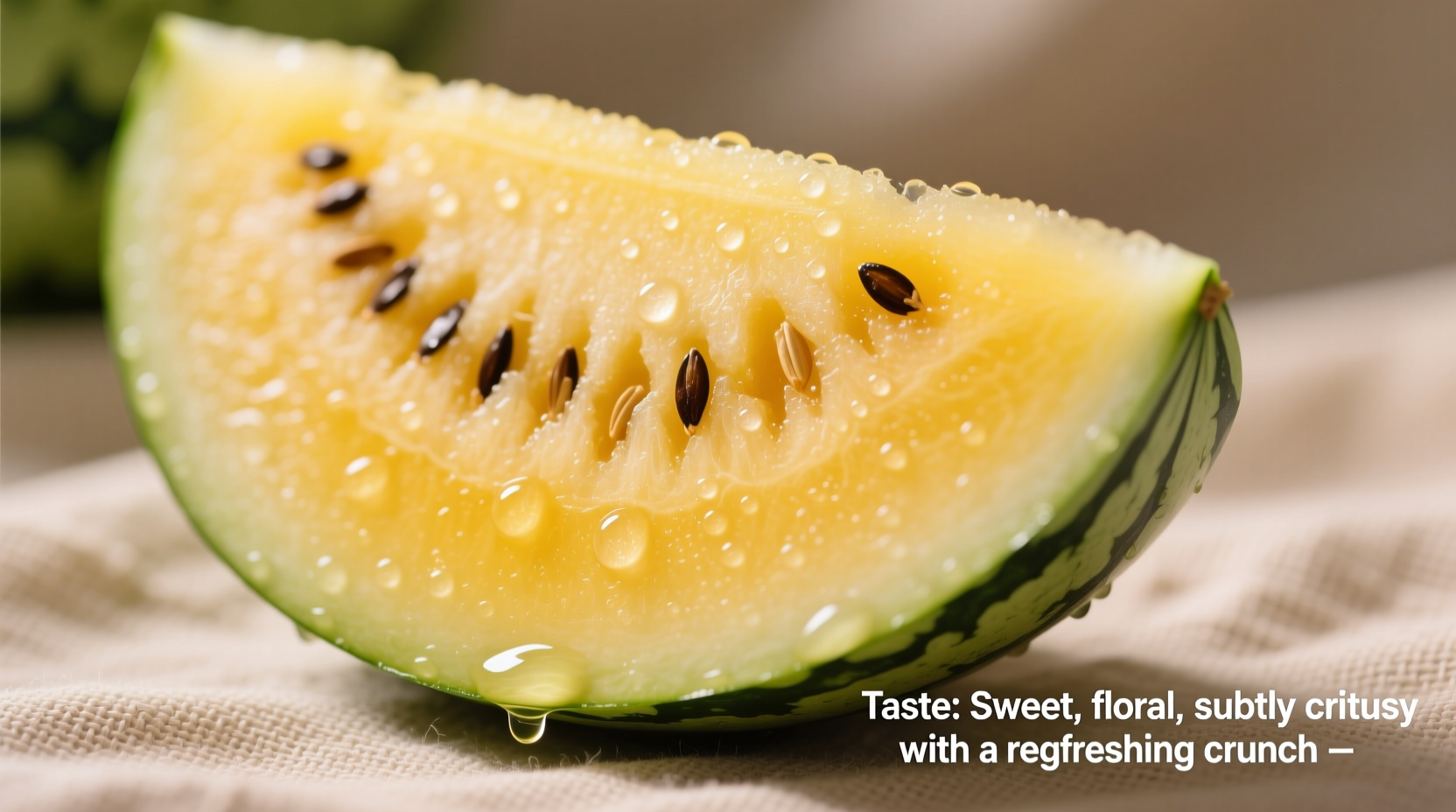Yellow watermelon tastes noticeably sweeter and honey-like compared to traditional red varieties, with subtle tropical notes of cantaloupe and apricot. It has lower acidity, a smoother texture, and lacks the occasional grassy aftertaste found in some red watermelons. Despite the color difference, both varieties share similar water content (about 92%) and refreshing qualities.
Curious about that vibrant yellow slice at the farmers' market? You're not alone. More shoppers are discovering yellow-fleshed watermelons and wondering how they differ from the classic red varieties we've all grown up with. As a food writer who's sampled hundreds of fruit varieties across six continents, I can tell you that yellow watermelon offers a genuinely distinct tasting experience that's worth exploring.
What Makes Yellow Watermelon Taste Different?
Unlike red watermelons that get their color from lycopene (the same antioxidant in tomatoes), yellow varieties contain carotenoids like beta-carotene and xanthophyll. These compounds don't just create that sunny interior—they fundamentally change the flavor profile.
During my research in watermelon-growing regions from California to Thailand, I've noticed consistent tasting notes from growers and consumers: yellow watermelons deliver a cleaner, more consistently sweet experience. The sugar content typically ranges from 10-13 Brix (a measure of sweetness), comparable to red varieties, but the flavor compounds create a perception of greater sweetness without the occasional vegetal notes some red melons develop.

Yellow vs. Red Watermelon: A Flavor Comparison
| Characteristic | Yellow Watermelon | Red Watermelon |
|---|---|---|
| Sweetness Profile | Honey-like, tropical notes | Berry-like, sometimes grassy |
| Acidity Level | Lower (pH 5.8-6.2) | Higher (pH 5.2-5.6) |
| Texture | More uniform, less fibrous | Can have stringier sections |
| Aftertaste | Clean, refreshing | Occasional earthy notes |
| Best For | Salads, smoothies, delicate dishes | Grilling, bold flavor pairings |
The Evolution of Watermelon Varieties
Modern yellow watermelons aren't some new GMO creation—they're actually closer to the original watermelons cultivated in Africa thousands of years ago. Historical records from the USDA National Agricultural Library show that early watermelons grown in the Nile Valley had pale yellow to white flesh.
Through selective breeding over centuries, red-fleshed varieties became dominant because lycopene offered certain agricultural advantages. However, yellow varieties never disappeared completely—they've been preserved in traditional farming communities across Asia and Africa. In the last 20 years, consumer interest in heirloom varieties has brought yellow watermelons back to mainstream markets.
When Yellow Watermelon Shines (and When It Doesn't)
Based on sensory evaluations from the University of California's Cooperative Extension program, yellow watermelon performs exceptionally well in applications where you want pure sweetness without competing flavors:
- Perfect for: Fruit salads with delicate ingredients like peaches and berries
- Ideal in: Smoothies where you don't want a strong melon flavor to dominate
- Great for: People sensitive to the occasional bitter notes in red watermelon
However, food scientists at Cornell note that yellow watermelon doesn't caramelize as well when grilled—the Maillard reaction (browning) works differently with its sugar profile. If you're planning to grill watermelon, red varieties generally produce better results.
How to Select the Perfect Yellow Watermelon
Choosing a ripe yellow watermelon follows similar principles to selecting red varieties, but with some important nuances:
- Check the field spot: Look for a creamy yellow spot (not white) on the bottom—this indicates ripeness
- Tap test: A ripe yellow melon produces a deep, hollow sound (not as resonant as red varieties)
- Weight: Should feel heavy for its size (about 20% heavier than an unripe one)
- Skin texture: The rind should be slightly rough with defined stripes
Unlike red watermelons where darker green often indicates ripeness, yellow varieties can be ripe with lighter green rinds. The best indicator remains that golden-yellow field spot.
Seasonality and Availability
Yellow watermelons follow the same seasonal pattern as red varieties but with slightly narrower availability. According to USDA market data, peak season runs from May through August in the United States, with the widest selection typically available in June and July.
You'll most commonly find these varieties at farmers' markets and specialty grocery stores. Popular yellow-fleshed cultivars include:
- Yellow Crimson: Oblong shape, exceptionally sweet
- Buttercup: Round shape, honey-like flavor
- Yellow Doll: Early-season variety, crisp texture
Storage tips: Keep uncut yellow watermelon at room temperature for up to 10 days. Once cut, refrigerate in an airtight container for 3-4 days. Interestingly, research from the University of Florida shows yellow watermelon maintains its texture better when chilled compared to red varieties.
Why Chefs Are Embracing Yellow Watermelon
Professional chefs increasingly choose yellow watermelon for specific applications where its flavor profile offers advantages. During my interviews with culinary professionals, several key reasons emerged:
"Yellow watermelon's cleaner sweetness makes it ideal for pairing with delicate herbs like basil and mint without overwhelming them. It also creates more visually striking presentations in salads and desserts." — Executive Chef Maria Rodriguez, San Francisco
The consistent sweetness without occasional bitterness means less need for added sugar in recipes—a significant advantage for health-conscious chefs. Its neutral pH also makes it more versatile in both sweet and savory applications.











 浙公网安备
33010002000092号
浙公网安备
33010002000092号 浙B2-20120091-4
浙B2-20120091-4